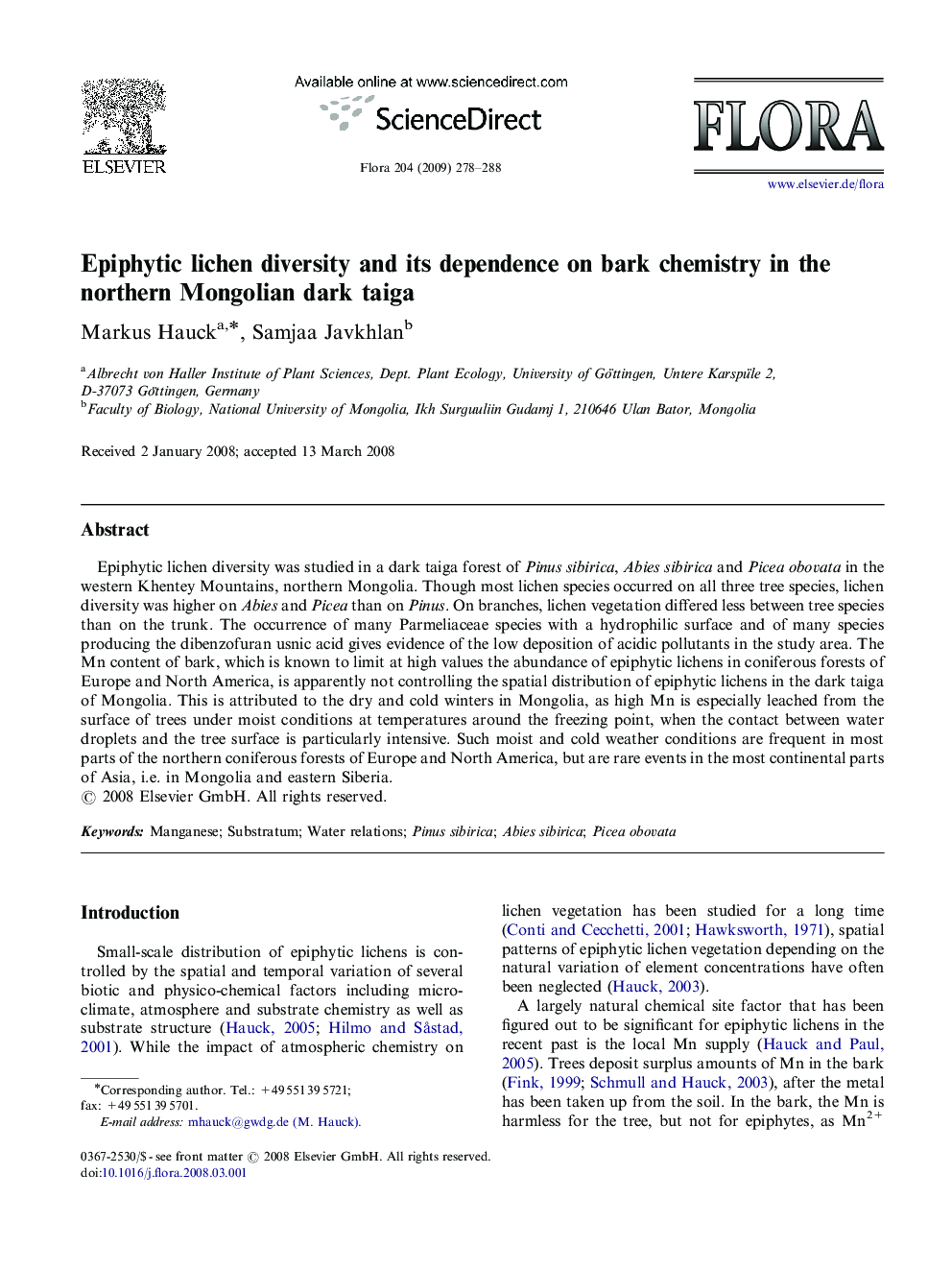| Article ID | Journal | Published Year | Pages | File Type |
|---|---|---|---|---|
| 2180140 | Flora - Morphology, Distribution, Functional Ecology of Plants | 2009 | 11 Pages |
Epiphytic lichen diversity was studied in a dark taiga forest of Pinus sibirica, Abies sibirica and Picea obovata in the western Khentey Mountains, northern Mongolia. Though most lichen species occurred on all three tree species, lichen diversity was higher on Abies and Picea than on Pinus. On branches, lichen vegetation differed less between tree species than on the trunk. The occurrence of many Parmeliaceae species with a hydrophilic surface and of many species producing the dibenzofuran usnic acid gives evidence of the low deposition of acidic pollutants in the study area. The Mn content of bark, which is known to limit at high values the abundance of epiphytic lichens in coniferous forests of Europe and North America, is apparently not controlling the spatial distribution of epiphytic lichens in the dark taiga of Mongolia. This is attributed to the dry and cold winters in Mongolia, as high Mn is especially leached from the surface of trees under moist conditions at temperatures around the freezing point, when the contact between water droplets and the tree surface is particularly intensive. Such moist and cold weather conditions are frequent in most parts of the northern coniferous forests of Europe and North America, but are rare events in the most continental parts of Asia, i.e. in Mongolia and eastern Siberia.
